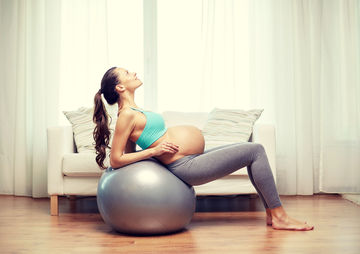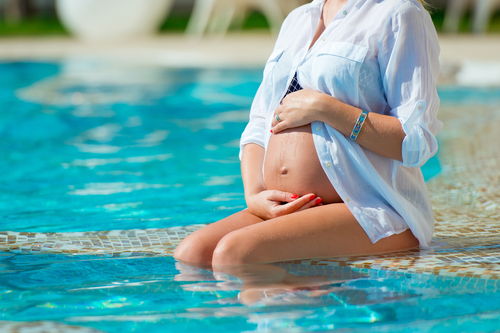
Even with their protruding bellies, expectant mothers can still get regular exercise.
They just might have to make a few adjustments in how they break a sweat.
Here are things to know about exercising while pregnant.
Change starts from the beginning
Many expecting women believe – falsely – that they can train as they normally do in the first few months.
“Even early on, future mothers should avoid high-impact sports such as gymnastics as well as extreme strength training or combat sports,” says psychologist Marion Sulprizio.
Water sports reduce water retention

“Swimming, aquafitness, aqua-jogging, even aqua-spinning: Sports that take place in the water are perfect for oedema,” explains gynaecologist Susanne Weber.
The water pressure works miracles.
However, women who have frequent vaginal infections need to be cautious.
Gentle cardio and strength training are ideal
“Pilates and yoga have a powerful mobilising effect,” explains Doerte Krauss, a pre- and postnatal sports trainer.
Nordic walking is also great, as it trains the entire body without involving the pelvic floor.
Cyclical movements and even cycling are very good, Weber adds.
However, “because there is a risk of falling, it is best to bike on a protected bicycle path or on a stationary bike,” she says.
Foot training prevents back pain
Weight gain, hormonal changes and water retention often cause the arch of the foot to sag, resulting in a larger foot after pregnancy, Krauss explains.

And to the surprise of many mothers, the change results in back pain.
Retraining the body always starts with the feet, since they carry the body’s weight.
“Strengthening exercises or massages help stimulate the muscles of the feet,” Krauss says.
Don’t even think about climbing, diving or sit-ups
Even though many women can, for the most part, continue exercising as normal during pregnancy, they should not do much more.
Deep-sea diving, hiking at altitudes of 2,500 meters or higher, climbing and skiing are no-nos, Sulprizio says.
Even sit-ups – despite sounding less risky – are unsuitable for pregnant women.
Exercising while pregnant helps during birth
Staying active minimises the risk of complications when giving birth.
Women who exercise are less likely to gain too much weight, develop gestational diabetes or preeclampsia, Weber says. However: “If you have high blood pressure, first consult with a doctor.”
It is also helpful to be fit for birth, as “an athletic conscious breath supports women during the birthing process.”
After birth, the body needs time
“Immediately following birth, a midwife can help mothers train their pelvic and musculoskeletal muscles,” Sulprizio says.
Two to three months after birth, a woman can start with light activity, and after nine months she can resume activity and engage in sports as normal. – dpa

Leave a Reply